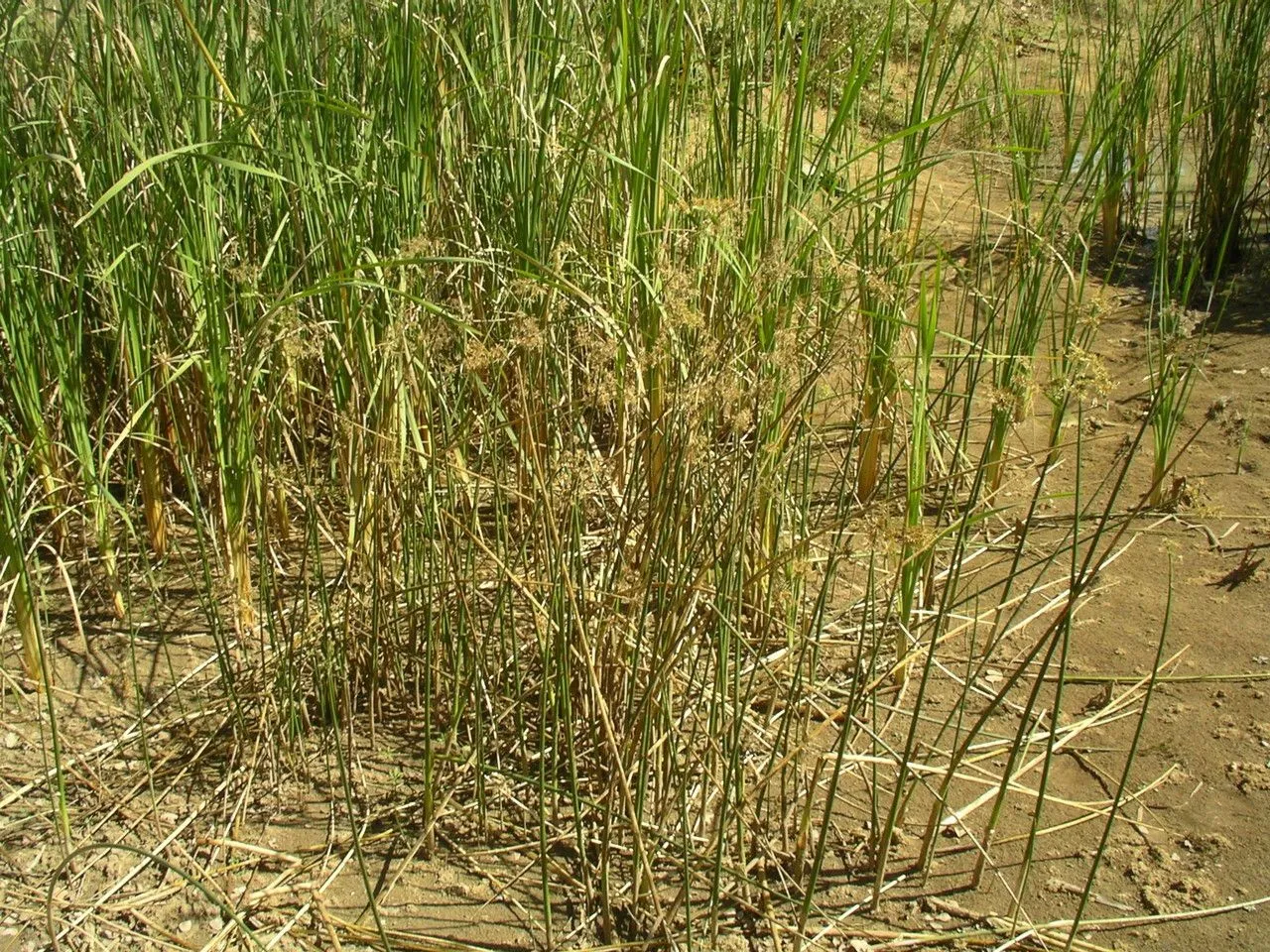
Author: L.
Bibliography: Sp. Pl.: 44 (1753)
Year: 1753
Status: accepted
Rank: species
Genus: Cyperus
Vegetable: False
Observations: Tropics & Subtropics
Chintul, scientifically known as Cyperus articulatus, is a remarkable species belonging to the Cyperaceae family. First described in 1753 by the renowned botanist Carl Linnaeus in his seminal work “Species Plantarum,” this plant has captivated botanical interest for centuries.
Chintul thrives predominantly in tropical and subtropical regions around the globe. It is well-adapted to these climates, showcasing its resilience and versatility in various environmental conditions. Typically found in wetlands, marshes, and along riverbanks, Chintul plays a vital role in these ecosystems. Its rhizomes help stabilize soil, thereby preventing erosion, while also providing a habitat for diverse fauna.
The structure of Cyperus articulatus is characterized by its tall, slender stems, which can grow to impressive heights. The stems are segmented, giving the plant its distinct appearance. These segments or “articulations,” are key identifying features and are the basis for its specific epithet ‘articulatus.’ The leaves are long and narrow, forming a basal rosette around the stem’s base, while the inflorescences are composed of numerous tiny spikelets that cluster into globe-like heads.
Chintul’s aesthetic appeal is complemented by its practical applications. Traditionally, various cultures have utilized this plant for its purported medicinal properties. It has been used in herbal remedies to treat ailments such as fevers, digestive disorders, and wounds. Additionally, its stems have been employed in crafting and weaving, reflecting the plant’s significance in both ecological and cultural contexts.
In conclusion, Chintul (Cyperus articulatus) stands as a testament to the intricate interplay between plants and their environments. Its presence in tropical and subtropical regions not only enriches biodiversity but also underscores the extensive uses humans have found for it over centuries. Whether appreciated for its ecological role or its traditional uses, Chintul remains a plant of significant interest and value.
Eng: chintul, guinea-rush, jointed flat sedge, jointed flatsedge
Fra: souchet articulé
En: Chintul, Guinea-rush, Jointed flat sedge, Piripiri, Jointed flatsedge, Guinea Rush
Ar: بوط، ديس مدور (ديس مدَّور), سعد (سِعْد، سَعْد)، ديس (دِيس), سمار (سَمار، سُمار)
Fr: Souchet articulé, Savane tremblante
He: גומא הפרקים
Es: Huaste, Piripiri de víbora
Taken Sep 23, 2022 by Mohammad Zaman (cc-by-sa)
Taken Jan 1, 1900 by EOL − Gibran Morales C. (cc-by-nc-sa)
Taken Dec 25, 2021 by Trap Hers (cc-by-sa)
Taken Dec 2, 2022 by benjamin betey Campion (cc-by-sa)
Taken Dec 2, 2022 by benjamin betey Campion (cc-by-sa)
Taken Jul 4, 2014 by Nelson Zamora Villalobos (cc-by-nc)
Taken Dec 4, 2021 by Augustin Soulard (cc-by-sa)
Taken Jan 1, 1900 by EOL − Marco Schmidt (cc-by-nc-sa)
Taken Jun 10, 2014 by Nelson Zamora Villalobos (cc-by-nc)
Taken Mar 3, 2022 by sosno (cc-by-sa)
Taken Aug 11, 2022 by Francisco Munguambe (cc-by-sa)
Taken Dec 14, 2007 by Tela Botanica − Sylvain PIRY (cc-by-sa)
Taken Dec 14, 2007 by Tela Botanica − Sylvain PIRY (cc-by-sa)
Taken Dec 14, 2007 by Tela Botanica − Sylvain PIRY (cc-by-sa)
Taken Jan 1, 1900 by EOL − Gibran Morales C. (cc-by-nc-sa)
Taken Jan 1, 1900 by EOL − Gibran Morales C. (cc-by-nc-sa)
© copyright of the Board of Trustees of the Royal Botanic Gardens, Kew.
© copyright of the Board of Trustees of the Royal Botanic Gardens, Kew.
© copyright of the Board of Trustees of the Royal Botanic Gardens, Kew.
Taken Jan 1, 1900 by EOL − Gibran Morales C. (cc-by-nc-sa)
Taken Jan 1, 1900 by EOL − Marco Schmidt (cc-by-nc-sa)
Growth habit>: Graminoid
Family: Myrtaceae Author: (F.Muell.) K.D.Hill & L.A.S.Johnson Bibliography: Telopea 6: 402 (1995) Year: 1995 Status:…
Family: Rubiaceae Author: Pierre ex A.Froehner Bibliography: Notizbl. Bot. Gart. Berlin-Dahlem 1: 237 (1897) Year:…
Family: Sapindaceae Author: Koidz. Bibliography: J. Coll. Sci. Imp. Univ. Tokyo 32(1): 38 (1911) Year:…
Family: Asteraceae Author: A.Gray Bibliography: Pacif. Railr. Rep.: 107 (1857) Year: 1857 Status: accepted Rank:…
Family: Fabaceae Author: Medik. Bibliography: Vorles. Churpfälz. Phys.-Ökon. Ges. 2: 398 (1787) Year: 1787 Status:…
Family: Aspleniaceae Author: (Cav.) Alston Bibliography: Bull. Misc. Inform. Kew 1932: 309 (1932) Year: 1932…